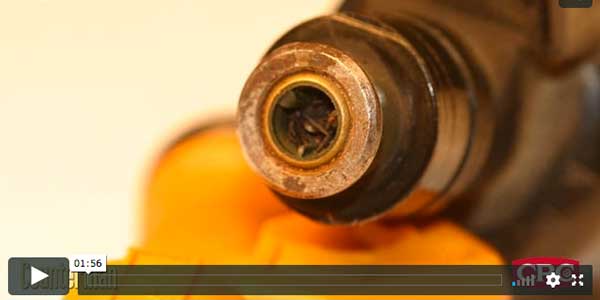Specialty automotive chemicals. They are lots of them! And each one is designed for a very special purpose. Use one for the wrong job and well.. Let’s just make sure we use them for the right job! The aisles in most auto parts stores are filled with all kinds of specialty chemicals.
Let’s review one of the hottest chemical categories these days — fuel cleaner additives. There are basically three types, two of which we’ll review today.
No. 1: Gas treatments: These are low-dosage cleaners for regular use or every fill-up. These products are designed to supplement the detergents and cleaners that are in gasoline. All gasoline is required to contain a minium level of cleaner — which is all you get with some low-priced brands. “Top Tier” gasolines contain higher levels of detergents and cleaners, but only some brands qualify as Top Tier products. For the others, using a supplemental gas treatment is recommended.
No. 2. Injector Cleaners: These are higher-dose cleaners that are formulated to help keep fuel injectors clean, and to clean dirty injectors. Fuel deposits can restrict and even clog the injector nozzles, reducing fuel flow and disrupting the spray pattern of the injector that is critical for good fuel atomization, performance and fuel economy. These products provide an extra dose of cleaner that loosens and flushes away deposits inside the injectors. Well, that’s it for today. Keep an eye out for my next video, where we’ll discuss Complete Fuel System Cleaners.
Video courtesy Counterman.














